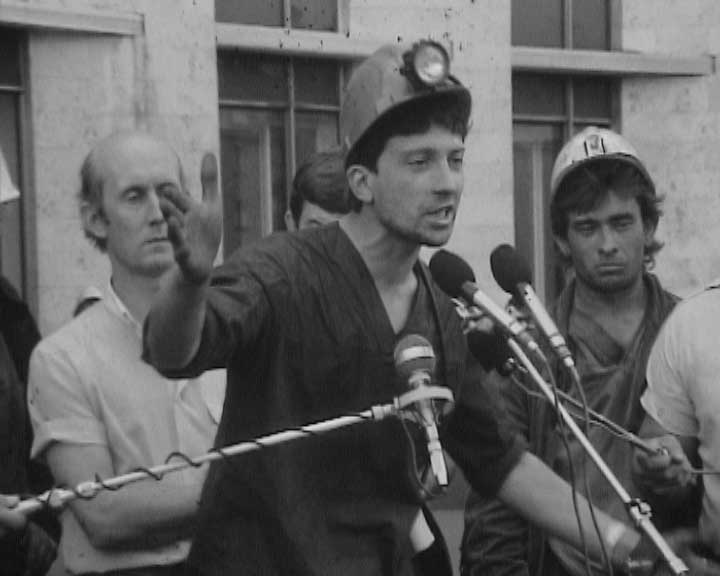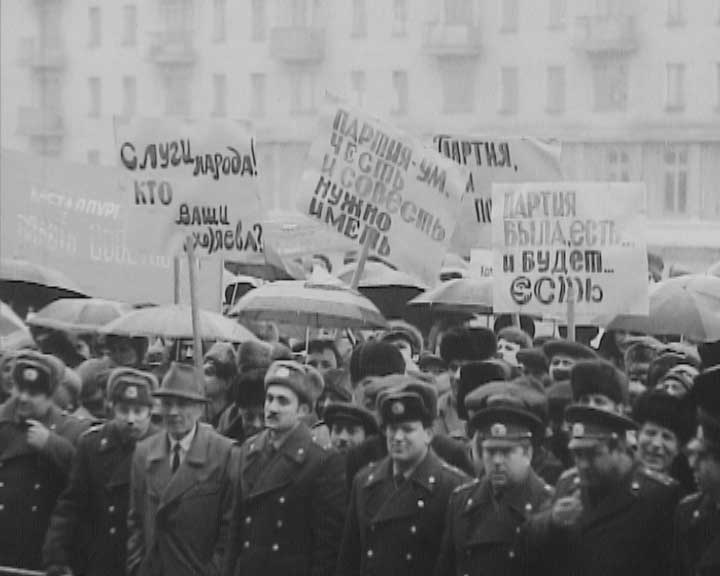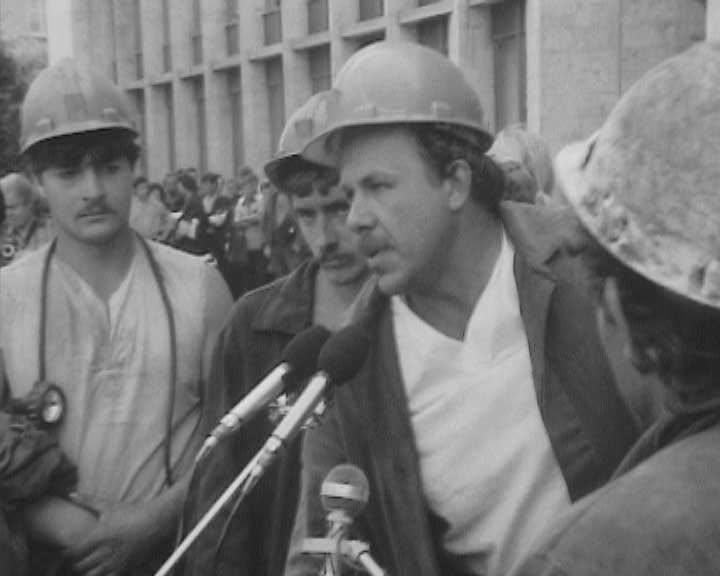
July Thunderstorms / Lypnevi hrozy
1989, 1991
Ukrainian SSR, Ukrkinokhronika, Krynytsia
82 min, 75 min
Anatolii Karas, Viktor Shkurin
Anatolii Karas, Viktor Shkurin
Viktor Kripchenko, Serhii Tymofieiev
July Thunderstorm is a two-part series about the first large-scale protests in Soviet Ukraine that took place in many years. The two parts of the first part of the series, Strike and Release, are dedicated to the two unprecedented waves of miners’ strikes in Donetsk in 1989 and 1990, respectively. These epoch-making strikes involved several hundred thousand miners and were a significant factor in the collapse of the Soviet Communist system.
The protests in Donbas began in July 1989, with over a hundred mines ceasing operations. Within a week, the miners’ strike became the subject of a special television address by Mikhail Gorbachev. Representatives of the Strike Committee were invited to Moscow for negotiations, where all their demands were temporarily met. Alongside the unfolding strike and miners’ speeches in Donetsk’s square, the filmmakers observe the impoverished living conditions of the miners and the harsh working conditions at the Mine of Lidiievka.
The second film in the July Thunderstorms series begins with an accident at the Pochenkov’s Mine in February 1990, which resulted in the death of 13 miners. Since the summer protests, the real situation on the ground in the mines had not changed, leading to a second wave of miners’ protests in 1990–1991. This time, the miners’ slogans included political demands, such as the decommunization of power and the independence of Ukraine. Representatives of the miners met with Communist officials, including the last First Secretary of the Central Committee of the Communist Party of Ukraine, Stanislav Hurenko, and the Chairman of the Council of Ministers of the USSR, Nikolai Ryzhkov. The August coup and the eventual collapse of the Soviet Union were met by the Donbas miners in strike committees.
Directors Anatolii Karas and Donetsk-native Viktor Shkurin capture the history of the emergence and development of the miners’ protest movement with a sense of awe and perturbation in their film. The camera, operated by Anatolii Kripchenko and Serhii Tymofeiev, lingers on the emotional speeches of the strikers and carefully documents the evolution of the protest slogans. In 1993, the Independent Miners’ Union, the Donetsk Strike Committee, and the creative association Krynytsia nominated the creators of July Thunderstorms for the Shevchenko Award, which they ultimately received.
From the perspective of a contemporary viewer, July Thunderstorms is an invaluable document of the Perestroika era. Primarily, it reveals the first glimpses of the awakening of modern Ukrainian political consciousness, which would continue in the “Revolution on Granite,” the “Ukraine without Kuchma” movement, and the two recent Maidans. Moreover, the achievement of Ukraine’s independence was the result of public protests similar to those depicted in July Thunderstorms. Additionally, it will be difficult to avoid drawing analogies with recent historical events in Ukraine. Among the strike participants in the film, one can spot several figures from recent Ukrainian politics, such as former MPs Yurii Boldyirev and Petro Symonenko. It is also interesting to note that most of the film’s events unfold in the square in front of the Regional Communist party committee building—the same building where the Donetsk Regional State Administration was located until 2014, marking the beginning of the “DNR” project.


